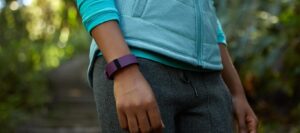
Next generation EMA
Ecological Momentary Assessment is the method of capturing data from people as they go about their daily lives. Traditionally data collection has been mostly restricted to participant self-report, even with the shift towards the use of Smartphones. Since 2013 Ilumivu has been pioneering the capture of other data streams in EMA research including those captured passively from the phone (e.g. location, acceleration, call logs, screen use, ambient sound and light, current weather conditions).
Capturing these data have allowed researchers to see a bigger picture of participants’ behavior by grounding it in a wider context. The next phase in the evolution of this methodology is to add physiological measures such as activity, heart rate, galvanic skin response and sleep. We are currently focused on the integration of devices that allow the capture of heart rate variability (HRV).
What is HRV?
Heart Rate Variability is the change in the time intervals between adjacent heartbeats. The raw data are usually in the form of a series of timestamps at the peak of each heart beat (R). From this HRV can be calculated in numerous ways, including the standard deviation of all inter-beat intervals in a specified time frame (e.g. 24 hours or 5 minutes). Many use beat-to-beat measures such as the root mean square of successive RR (peak-to-peak) differences (RMSSSD).
The mEMA System captures raw heart beat data from a range of devices including Smartwatches running Android Wear and performs the HRV calculations either directly on the wearable device or on the phone so it can be used in real-time for display to users or triggering EMA surveys.

Why is this useful?
HRV reflects the moment-to-moment balance of the sympathetic and parasympathetic branches of the autonomic nervous system providing a measure of how well the person is adapting to their momentary environment. Increased HRV is associated with higher heart health, a variety of cognitive-behavioral functions (e.g. smaller negativity bias, greater willingness to approach novel objects, lower levels of rumination) and greater emotional regulation and resiliency to stress. Those with higher levels of resting HRV are more likely to respond to stressors in a context-appropriate manner and recover from them more quickly.
How is it used in EMA and EMI studies?
HRV provides data on moment-to-moment changes in how as person is functioning. The use of wearable devices to capture the raw data has opened up the research field to the possibility of capturing HRV while people go about their everyday lives rather than being restricted to measuring it in the lab. Using wearables researchers have investigated the relationship of HRV to PTSD symptoms (1), eating disorders (2), perseverative cognition (3), negative symptoms in schizophrenia (4), affective dysregulation in borderline personality disorder (5), depressive mood and social interaction (6), the dynamics of emotional regulation (7), drug use and craving in polydrug users (8).
Going to the next step some groups are designing interventions that rely on the capture of contextual and physiological data to deliver just-in-time or adaptive interventions. Researchers are using multi-stream data capture systems to devise algorithms that are able to predict (with varying degrees of accuracy) participants’ activities, emotional state and social context (9) and provide promising interventions in populations with anxiety, depressions, substance abuse disorders, sleep disturbances, suicidal behavior, eating disorders, stress and gambling (10). As a real-time indicator of emotional state HRV is of special interest in many psychological and behavioral health settings. Mobile biofeedback interventions are being created to help people reduce stress as soon as it begins to appear in their HRV data (11, 12, 13).
How is HRV captured in the mEMA System?
mEMA integrates with Garmin wearables to collect inter-beat-interval (IBI) data from which we can derive HRV. The Garmin SDK allows us to capture IBI data in real-time via Bluetooth from the wearable to the mEMA app on the phone. The IBI data are then sent to the ilumivu servers to be integrated with EMA data for that user. In some cases we process the IBI data on the phone to generate HRV and use that to provide direct real-time feedback to the user or to trigger surveys or intervention content at that moment.
References
- http://pubmedcentralcanada.ca/pmcc/articles/PMC4779501/
- http://onlinelibrary.wiley.com/doi/10.1002/eat.22464/full
- http://psycnet.apa.org/journals/bul/142/3/231/
- http://psycnet.apa.org/journals/abn/126/1/96/
- http://www.psy-journal.com/article/S0165-1781(06)00121-1/abstract?cc=y=
- http://psycnet.apa.org/journals/hea/28/4/501/
- http://www.sciencedirect.com/science/article/pii/S0167876003001466
- http://www.sciencedirect.com/science/article/pii/S0376871615001805
- http://www.jmir.org/2011/3/e55/?newDesign
- http://www.jmir.org/2013/11/e247?utm_source=TrendMD&utm_medium=cpc&utm_campaign=JMIR_TrendMD_0
- http://scholarspace.manoa.hawaii.edu/bitstream/10125/41593/1/paper0444.pdf
- http://www.amhcajournal.org/doi/abs/10.17744/mehc.39.2.06?code=amhc-site
- http://ieeexplore.ieee.org/abstract/document/7296599/?reload=true
